Namaste 🙏 to all of you. My name is Lavanya, from India, and I am a housewife.
This is my entry post for the ongoing contest regarding Get to Know the Steem Blockchain by #SteemitCryptoAcademy.
Thanks for conducting this wonderful contest for us. From this, it is possible to learn more details regarding Steem Blockchain.
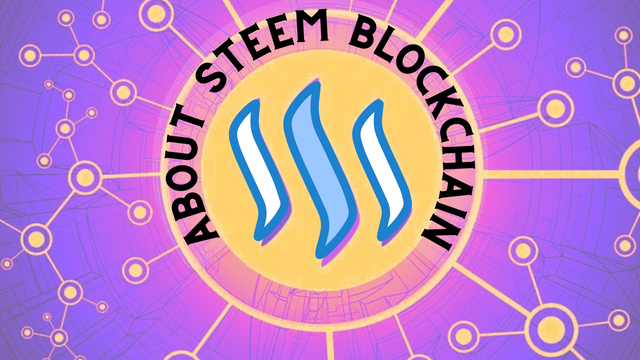
We also know that Steem is a blockchain-based social media platform. It supports community building and social interaction by posting and sharing content. Users are rewarded with cryptocurrency in the form of Steem, SP, and SBD based on their contributions.
Here, anyone can create, share, or upvote content on the Steem network, earning crypto tokens according to their productivity. The easiest way to earn STEEM is by joining Steem and contributing through posting, commenting, voting, and curating content.
In today's post, I'll try to provide more information about the Steem Blockchain.
Discuss the Steem consensus protocol for Proof of Delegated Participation.What is the distinction between DPoS and PoW? |
|---|
Steem is a blockchain-based, decentralised social media platform with its cryptocurrency token called STEEM. It is built on the principle of rewarding users and blockchain operators for their contributions, instead of selling user data as other popular social media networks do.
Keeping this in mind, Steem uses a Delegated Proof-Of-Stake(DPoS) consensus protocol in which users can delegate their voting power to others.
Before knowing more details about those, first, we need to understand what is meant by Consensus Protocol. Then we only understand the difference between DPoS and PoW and Why steem choose the DPoS protocol.
| What is a consensus protocol? |
|---|
A consensus protocol is a standard that determines how nodes on a distributed network reach an agreement. A consensus protocol is essential for a blockchain network as it allows network participants to agree on the state of the network.
Consensus protocols exist in multiple types, such as hybrid protocols, proof of work (PoW), proof of stake (PoS), and many more.
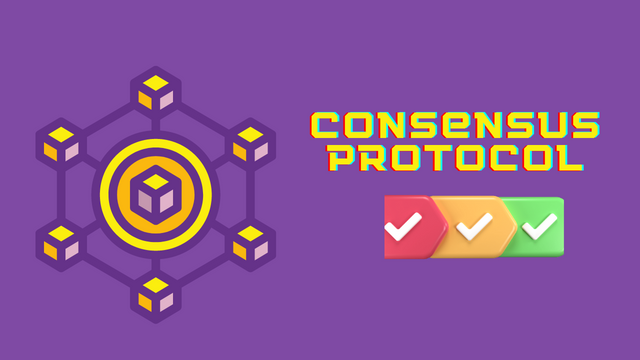
A consensus protocol does not only determine the rules for validating transactions but also for generating new coins in the network.
Each type of consensus protocol comes with its own set of rules and traits that determine the rate at which a particular cryptocurrency token is generated.
| Proof of Work (PoW) |
|---|
This is a consensus protocol used by blockchains to validate transactions and create new blocks on the blockchain. When a user initiates a transaction on a blockchain network, nodes on the network verify this transaction.
This protocol works based on the Work-to-Proof principle, in which the user who solves a complex mathematical problem first gets to create the next block in the blockchain. The user who creates a new block is called a miner, and this is how new coins are created.
That's this consensus protocol called Proof of Work (PoW). Most of the blockchains run on this mechanism.
| Proof of Stake(PoS) |
|---|
In this consensus protocol, the users who hold a certain number of the blockchain’s tokens are rewarded for validating transactions. In PoS, the more tokens you hold, the more validating power you have. The validators in PoS create new blocks in the blockchain by placing a bet on which block will be added next.
The validator who places a bet on the next block to be added correctly is rewarded with a block reward and transaction fees.
This protocol is simpler than PoW as you do not have to put in a lot of effort to mine new tokens. You just have to hold a significant number of tokens in your wallet to earn rewards.
| Differences between DPoS and PoW |
|---|
DPoS and PoW are two different types of consensus protocols.
DPoS is a type of consensus protocol where the token holders choose delegates to create new blocks on the network. In PoW, however, anyone can create blocks as long as they have enough computing power to solve complex mathematical problems. Not just block creators, every node on the network has to solve the problem to create the next block on the blockchain.
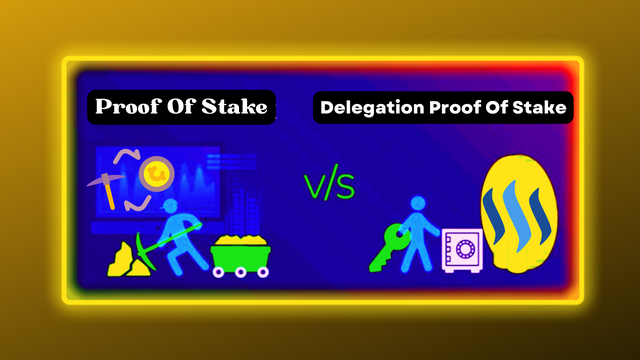
Note: This picture I took outside,then after I edit as per my wish using canva
PoW requires a lot of resources and computational power, which makes it expensive for the network. DPoS, on the other hand, requires only a small amount of computing power to create blocks on the network.
DPoS delegates the computational power of creating and validating blocks to a few selected nodes. This makes it a cheaper and more efficient way to maintain a blockchain network.
| Steem’s implementation of DPoS |
|---|
The network of Steem is completely operated by its users. A Steem user can become a witness by voting for other users to become witnesses. If a user gets voted in successfully, they have the right to create blocks on the Steem blockchain network. The more votes a user has, the more they earn in terms of rewards for creating new blocks.
Steem uses a type of DPoS called Delegated Proof of Stake. In this type of DPoS, the users cast votes for witnesses. If a witness gets enough votes, they can become a block creator. The blockchain rewards the witnesses for creating new blocks by giving them a percentage of the transaction fees.
How often does a block occur in the Steem blockchain and how many tokens it use? Discuss this topic |
|---|
Blocks in Steem are called transactions. Each transaction needs to be confirmed by the nodes in order for it to be added to the blockchain, so blocks are downloaded and uploaded simultaneously.
A block will occur in Steem every three seconds. For completing this process, validators get STEEM tokens as a reward.
Witnesses are scheduled on the Steem blockchain to create a new block every 3 seconds. In each 63-second round, 21 witness nodes generate 21 blocks. Here 21st witness act as backup witnesses, remaining 20 members work as full-time witnesses.
How much of a reward pool is generated from every block, From this, 10% of rewards go to witnesses, with the remaining 90% of rewards distributed to authors and curators equally.
Along with that, it generates a fixed amount of STEEM when producing each block every 3 seconds. This means that with each new block generated, a fixed amount of STEEM is added to the reward pool. Following that, rewards are distributed to Witnesses, the Curator, and the Author.
This reward pool production is based on a yearly inflation rate of 9.5% since its inception in 2016. And it's a 0.5% decrease year after year. Like that, it took around 20 years to reach a 0.96% inflation rate.
So, day by day, the production of STEEM is decreasing. That's why the reward pool also decreased in the upcoming year.
Blocks are mined in the order they are created, and all blocks are mined in sequential order by the timestamp of when they were created, instead of their order in the blockchain, so you can't tell what is happening until it's all finished.
The timing between blocks affects mining rewards because miners compete with each other to create new blocks regularly.
Do you know what the first Steem Blockchain application was? Discuss this application |
|---|
The first application on the Steem blockchain is known as Steemit. It was launched in March 2016 by Ned Scott and Dan Larimer and is online blogging and social networking platform.
Steemit is a decentralised social media platform that pays users for creating content and curating Posts of other creators.
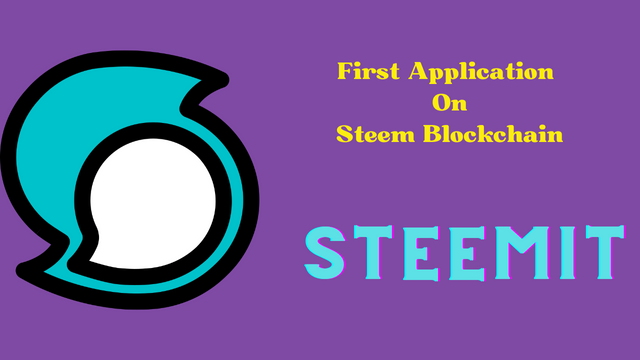
Users can post anything they want, including articles, blog posts, pictures, or other types of media. But they are rewarded by the community with its virtual currency, called Steem Dollars or Steem.
Steemit appears to be similar to Reddit and Facebook, but its reward distribution process is very different from either of these sites. Reddit rewards its submitters with points that are used to determine their standing on the site, while Facebook pays its users nothing at all for their posts, meaning that it is heavily biased towards advertisers rather than users.
In contrast to both of these platforms, every post on Steemit has an equal opportunity to earn awards in the form of digital currency for publishing content and curating other posts.
What is Proof of Brain (PoB)? |
|---|
Proof of Brain is a process that allows people to prove they are actually contributing to the ideas they share. PoB uses blockchain technology and smart contracts to keep track of important data like how much work a person has done on an idea and how many hours they have put into its development.
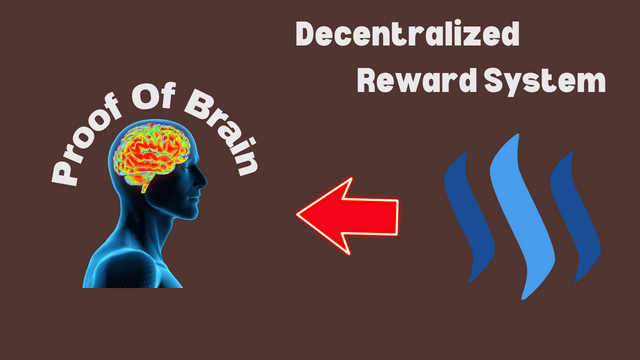
Proof-of-brain is a term for a decentralised reward system for users of a blockchain-based social network, such as Steemit. Proof-of-brain takes into account the amount of time, energy, and money that one has invested in creating and curating content to measure how much they have contributed to the network.
People who contribute more to the network are rewarded with more cryptocurrency.
Proof-of-brain rewards humans instead of machines by taking into account the time and effort they expend on creating new content.
Steemit is a blockchain-based social media platform where users can publish articles, blog posts, or any other kind of content, add them to trending or popular topics, and get paid when others upvote or comment on them.
Simply we may say, Proof of Brain is a Trust system that helps to establish the reliability of content curators on the Steemit platform.
Final Thoughts |
|---|
Steem is a blockchain-based, decentralised social media platform with its own cryptocurrency token called Steem. This platform work based on the Delegated Proof of Stake protocol. That's why this platform only gets popularity based on its users.
Unlike in other blockchains, the curator and author are both equally rewarded here.
It's similar to Reddit and Facebook. But here, users get payments for interacting with others or publishing content in the form of cryptocurrency called steem.
Based on a proof-of-brain concept, users are rewarded. This means more quality publications generate more rewards.
I like to invite my friends to participate in this contest @zulhendra, @msdbitco, @shohana1,@simonnwigwe, @chiabertrand, @nevlu123, and @harferri.
Thank you so much for reading this article!
This is a very great post as always. You have presented your knowledge of the Blockchain technology and the consensus protocols on a very good way. Surely, DPoS is much more scalable and secure than the PoW.
Proof of Brain mechanism makes the platform much more successful and impressive. The utilization of the grey matter by the authors and the curators bore fruits in the form of extracting proportional rewards from the minted Steem tokens.
Thanks a lot for sharing your Quality post with us. I wish you a very good luck for the contest.
Downvoting a post can decrease pending rewards and make it less visible. Common reasons:
Submit
Thank you very much for your great review. Take care my friend.
Downvoting a post can decrease pending rewards and make it less visible. Common reasons:
Submit
Hey my friend,
It's really nice seeing your entry this week and I really admire the commitment and hardwork which was imbedded into the post, from your article it's obvious you are more than a house wife but you are a crypto expert and I am glad you have really been doing well.
Just as the name implies it's really helpful in selecting hardworking authors and separating them from lazy authors who are just after getting rewards without impacting positively to the steem Blockchain technology, which is really not good. This mechanism helps promote the good and keep the steem Blockchain lovely with quality product.
Thank you very much for sharing, please you can check my own entry here
wishing you success
Downvoting a post can decrease pending rewards and make it less visible. Common reasons:
Submit
Thank you very much for your kind compliment. But I am not an expert in Blockchain technology, and my journey has only just begun. I need to learn more.
Take care of yourself, my friend.
Downvoting a post can decrease pending rewards and make it less visible. Common reasons:
Submit
Thank you sister for explaining such topics related to pow, pob and pos. I have interest before to know about this but today I understand the whole thing as you explained it in a simple way.
Downvoting a post can decrease pending rewards and make it less visible. Common reasons:
Submit
Thank you very much for your valuable feedback.
Downvoting a post can decrease pending rewards and make it less visible. Common reasons:
Submit
I must say you work is very self-explanatory..
This is true, compared to DPoS were the work is carried out in a less hectic environment with eco-friendly features as less electricity is required to carry out these operations.
Downvoting a post can decrease pending rewards and make it less visible. Common reasons:
Submit
Thanks for compliment.
Downvoting a post can decrease pending rewards and make it less visible. Common reasons:
Submit
Hey @lavanyalakshan,
Great post shared by you, I understood your post and I liked it, I would like to see your next post.
Downvoting a post can decrease pending rewards and make it less visible. Common reasons:
Submit
Thank you my friend.
Downvoting a post can decrease pending rewards and make it less visible. Common reasons:
Submit
Upvoted! Thank you for supporting witness @jswit.
Downvoting a post can decrease pending rewards and make it less visible. Common reasons:
Submit
Congratulations, your post has been upvoted by @scilwa, which is a curating account for @R2cornell's Discord Community. We can also be found on our hive community & peakd as well as on my Discord Server
Felicitaciones, su publication ha sido votado por @scilwa. También puedo ser encontrado en nuestra comunidad de colmena y Peakd así como en mi servidor de discordia
Downvoting a post can decrease pending rewards and make it less visible. Common reasons:
Submit
You explain very well about Steem Blockchain.,Thanks my dear friend for invite me.Wish you best of luck..
Downvoting a post can decrease pending rewards and make it less visible. Common reasons:
Submit
Thank you very much
Downvoting a post can decrease pending rewards and make it less visible. Common reasons:
Submit
Welcome my dear friend..
Downvoting a post can decrease pending rewards and make it less visible. Common reasons:
Submit
Nice article keep it up boss
Downvoting a post can decrease pending rewards and make it less visible. Common reasons:
Submit
Thank you my friend.
Downvoting a post can decrease pending rewards and make it less visible. Common reasons:
Submit
You have written well about the steem blockchain, expect my entry soon.
Downvoting a post can decrease pending rewards and make it less visible. Common reasons:
Submit
I will wait for your entry.
Downvoting a post can decrease pending rewards and make it less visible. Common reasons:
Submit
This is true about PoW, it requires a lot of energy to mine blocks on its chain and this makes it not eco-friendly. So many Bitcoin mining stations in the world have been closed down because of this issue and DPoS on the other hand requires very little power which makes it eco-friendly.
Downvoting a post can decrease pending rewards and make it less visible. Common reasons:
Submit
Yes,agree with you.
Downvoting a post can decrease pending rewards and make it less visible. Common reasons:
Submit
Your article has been supported with a 40% upvote by @afrizalbinalka from Team 2 of the community curator program. We encourage you to keep producing quality content on Steem to enjoy more support from us and a likely spot in our weekly top 7.
Downvoting a post can decrease pending rewards and make it less visible. Common reasons:
Submit
Thanks for support
Downvoting a post can decrease pending rewards and make it less visible. Common reasons:
Submit
Hey my friend,
It's really nice seeing your entry this week and I really admire the commitment and hardwork which was imbedded into the post, from your article it's obvious you are more than a house wife but you are a crypto expert and I am glad you have really been doing well.
Just as the name implies it's really helpful in selecting hardworking authors and separating them from lazy authors who are just after getting rewards without impacting positively to the steem Blockchain technology, which is really not good. This mechanism helps promote the good and keep the steem Blockchain lovely with quality product.
Thank you very much for sharing, please you can check my own entry here
wishing you success
Downvoting a post can decrease pending rewards and make it less visible. Common reasons:
Submit